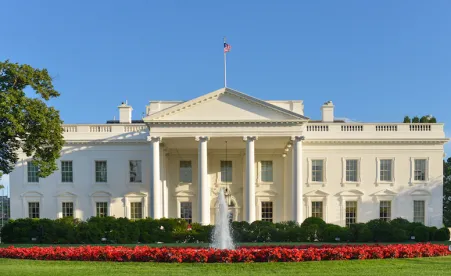“State Call to Action on Non-Compete Agreements” is the White House’s latest in a series of Executive Branch missives decrying the purported misuse of non-competition agreements by employers across the country.
Others in Series
In March 2016, a Treasury Department report, “Non-Compete Contracts: Economic Effects and Policy Implications,” which borrowed facts and conclusions mostly from limited, non-public studies, concluded that there is pervasive misuse of non-competition agreements, particularly with lower wage earners. We find that conclusion particularly interesting, as we have not seen that in our practice, in reported decisions in this area, or otherwise.
Then, on April 15, 2016, President Barack Obama issued an Executive Order, “Steps to Increase Competition and Better Inform Consumers and Workers to Support Continued Growth of the American Economy,” directing federal agencies to identify actions they can take to detect and eliminate barriers to competition, promote greater competition, eliminate anticompetitive behavior, and arm workers with information they need to make informed choices.
The Executive Order was followed one month later by a May 2016 White House report, “Non-Compete Agreements: Analysis of the Usage, Potential Issues, and State Responses,” mostly excoriating employers’ use of non-compete provisions in the United States. The May 2016 White House Report, which borrowed heavily from the Treasury Department report, billed itself as a “starting place for further investigation of the problematic usage of one institutional factor that has the potential to hold back wages — non-compete agreements.” Among other things, the May 2016 Report concluded that non-compete contracts can reduce the welfare of workers and “hamper the efficiency of the economy as a whole by depressing wages, limiting mobility, and inhibiting innovation.” It promised the Administration would identify key issues presented by non-compete agreements, examine state efforts to address such issues, and identify the best approaches for policy reform. It noted that most of the power is in the hands of state legislators and policymakers to adopt institutional reforms.
The Latest
The White House’s “State Call to Action on Non-Compete Agreements,” released on October 25, 2016, was accompanied by a Fact Sheet to “address wage collusion, unnecessary non-compete agreements, and other anticompetitive practices.” The latest White House document repeated many of the conclusions the Administration drew in its May 2016 Report, including the view that use of non-compete agreements artificially restrict competition, restrict worker mobility, create barriers to changing jobs and weaken employees’ bargaining power. The stated goal of the White House issuances on non-competes is to address wage stagnation and boost the economy. For support, it refers to research saying that “states that strictly enforce non-compete agreements have lower wage growth and lower mobility than states that do not enforce them.”
The October 2016 Call to Action again urges state policymakers to pursue best practice policy objectives, including:
1) Banning non-compete clauses for categories of workers, such as:
-
workers below a certain wage threshold;
-
workers in certain occupations that promote public health and safety;
-
workers who are unlikely to possess trade secrets; or
-
workers who may suffer undue adverse impacts from non-competes, such as workers laid-off or terminated without cause;
2) Improving transparency and fairness of non-compete agreements by, for example:
-
disallowing non-competes unless they are proposed before a job offer or significant promotion has been accepted (because an applicant who has accepted an offer and declined other positions may have less bargaining power);
-
providing consideration over and above continued employment for workers who sign non-compete agreements; or
-
encouraging employers to better inform workers about the law in their state and the existence of non-competes in contracts and how they work; and
3) Incentivizing employers to write enforceable contracts and encouraging elimination of unenforceable provisions by, for example, promoting the use of the “red pencil doctrine,” which renders contracts with unenforceable provisions void in their entirety.
While the Administration noted three states (California, Oklahoma, and North Dakota) whose laws currently deem non-compete agreements generally void and unenforceable, it summarily concluded employees in such states are still asked to sign an agreement with a non-compete provision as a deterrent. The Call to Action, therefore, also encourages states to “assign appropriate remedies or penalties for employers that do not comply with state non-compete statutes.”
State Actions
Some state attorneys general have taken action. In June 2016, Illinois Attorney General Lisa Madigan took the unusual step of suing a fast food chain for “imposing highly restrictive non-compete agreements” on its employees.
Likewise, New York State Attorney General Eric Schneiderman announced settlements in June and August 2016 with certain employers who agreed to curb their use of non-compete agreements. Most recently, coinciding with the release of the White House’s October 2016 Call to Action, Mr. Schneiderman announced he will encourage legislation to be introduced next year to “curb the rampant use of non-compete agreements, which depress wages and limit [worker] mobility.” Mr. Schneiderman’s office said the bill will seek to:
-
Prohibit the use of non-competes for any employee below a salary threshold (likely $900 per week);
-
Prohibit non-compete agreements that are broader than needed to protect the employer’s trade secrets or confidential information;
-
Require non-compete agreements to be provided to employees before a job offer is extended;
-
Require employers to pay employees additional consideration (money) if they sign non-compete agreements;
-
Limit the permissible time duration for non-compete agreements; and
-
Create a private right of action with remedies that include liquidated damages for violations.
Conclusions, Concerns are Unsupported
Many attorneys who represent companies in restrictive covenant litigation find the Administration’s conclusions and stated concerns about the evils of non-compete restrictions puzzling. Indeed, the Administration’s arguments regarding the detrimental effects of non-compete agreements appear more conclusory than based on empirical evidence. In fact, attorneys who prosecute breaches of restrictive covenant agreements, and those who defend against such claims, will confirm there are no states that “strictly enforce” non-compete agreements. While state law may vary on the enforceability of non-compete provisions, all courts will compel an employer seeking to enforce a non-compete or other restrictive covenant agreement to demonstrate that a non-compete provision at issue is reasonable in time and scope and designed to protect a legitimate, protectable business interest of the employer. Additionally, equitable considerations always come into play, including whether enforcement of a non-compete provision is just and appropriate under the circumstances, which requires a case-by-case and fact-by-fact analysis.
Contrary to the suggestions of the White House’s statements and other repeated misperceptions, there is no judicial rubber-stamp approval of employer efforts to enforce non-compete agreements. Courts across the country do a good job balancing the legitimate interests of the employer to protect its trade secrets, confidential information, or customer good will against the interests of the former employee to pursue the employment and career of his or her choice. In other words, the factors referenced by the White House Report and Call to Action already are part of the analyses courts undertake in determining whether and to what extent to enforce non-compete and other restrictive covenants in a given situation, in the context of the facts of each case. Legislation of the type being encouraged — including the call to eliminate blue-penciling — will upend decades of established and well-reasoned case law.
In the midst of these federal and state actions assailing non-compete agreements, the federal Defend Trade Secrets Act was passed in May 2016, with President Obama’s prompt signature and enthusiastic support. While the passage of the DTSA may appear inconsistent with these other White House initiatives and actions, it is becoming more evident that the DTSA is part of an overall shift in how the federal government, at least, views best approaches to protect company trade secrets — by encouraging enforcement of non-disclosure and confidentiality agreements, in lieu of non-compete provisions. The Call to Action references non-solicitation restrictions as preferable to a non-compete provision, and presumably such customer-based restrictions remain acceptable even to the critics of non-competition agreements.






 />i
/>i


